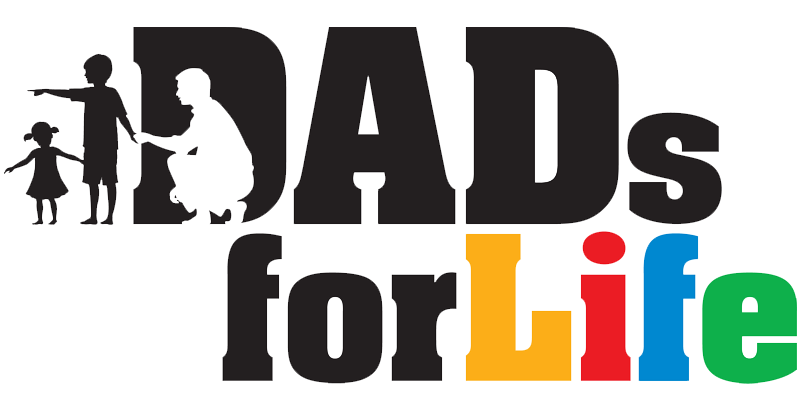Mcallister, C., Wilson, P., and Burton, J. (2004). From sports fans to nurturers: An Early Head Start program’s evolution toward father involvement. Fathering, 2 (1), 31-59.
.
Introduction
While the assumption that sports is an interest to fathers is stereotypical, it is often a helpful pathway for fathers into parenting programmes, as an Early Head Start (EHS) programme in the U.S. found. The programme seeks to strengthen fathers’ involvement in the lives of their young children. Not surprisingly, sporting activities frequently feature in programme elements, but even so, evolve through the programme cycle in how they seek to involve fathers.
Programme Features
Home visiting model
Programme staff visit weekly with parents and children in their own homes to foster and facilitate parent-child play activities, offer parenting support and education, and work with parents to identify and achieve family goals around employment, education, housing, and family relationships.
Group socialisation
Bi-monthly group meetings are also organised where parents and children meet with other families to engage in joint parent-child activities and learning experiences.
Parent leadership
Parent leadership is encouraged through parent committees and a policy council. Home visitors encourage enrolled families to attend monthly committee meetings and to serve on the council, and parent involvement specialists provide training and support to parents who choose these leadership roles. The committees and council make recommendations about services, budgets, and the hiring of staff, and provide a means for EHS parents to collectively address local community concerns such as the quality of public schools.
This approach reflects the programme philosophy that parents and parenting are key to healthy child development.
Father-inclusive
While focused on children, the programme attempts to involve all family members who are important in the child’s life, whether co-residential or not. This particularly includes working with the child’s biological and/or social father.
Methodology
A qualitative, ethnographic discovery process was employed to examine the issue of father involvement in the programme. This approach included several activities through the programme:
- Observation of programme meetings, especially father involvement activities;
- In-depth in-home interviews and case studies of enrolled families;
- Focus groups with staff; and
- Case studies of how staff work with fathers in particular families.
In contrast to much research on father involvement, this study spotlights staff experiences with fathers.
Results and Lessons
1. Father involvement in early childhood programmes may develop through specific stages. New programmes may take a while to mature even if learning from best practices.
In this programme:
- Stage 1 was characterised by a nearly exclusive focus on the mother-child relationship, and included fathers only if the father became the child’s legal guardian or when the mother herself included the father.
- In Stage 2, staff increasingly recognised the father’s role but encouraged his involvement primarily through special male-only activities such as attending local sports events or watching a local game. Staff still steered men to focus on employment-related issues rather than to think more holistically about their goals as fathers.
- Stage 3 sought to enroll fathers in programme services at the same time the mother and child were signed up. Special men’s activities shifted towards fathering support groups.
- Stage 4 involved attempts to engage fathers in child-focused home visits. Fathers were gradually encouraged to discuss family-related goals with staff. Father involvement in parent leadership activities was more consistently fostered.
- Stage 5 was characterised by a perspective that consistently viewed fathers as co-parents. Staff were encouraged to not just involve fathers but also think reflectively about the father-child relationship and the father’s role in child development. Staff also began to encourage and facilitate this same reflection on the part of both mothers and fathers.
The use – and evolution – of sporting activities to involve fathers through the stages is also illustrative. While staff first organised men-only sports activities for fathers to get them “in”, these were isolated from other programme components.
Later, activities allowed fathers and children to do things together and were more integrated with the programme. For example, rather than organising a trip to professional sports events, the programme later helped fathers organise their own softball team, with games attended by children and mothers, creating a family atmosphere.
At the end of softball season, fathers wanted to have monthly dinners together, using these occasions to host speakers and discussions on fathering. This support group, which became known as “Fathers Reaching Out”, also helped participants set and achieve goals related to their fathering roles.
Furthermore, these activities were soon viewed not simply as a vehicle for father involvement but as just one component of a comprehensive approach to fathers.
2. Programme barriers, staff perceptions, and fathers’ circumstances can hinder father involvement.
Some challenges identified included:
- Lack of clarity on which staff should lead father involvement; sometimes responsibility fell informally on male staff;
- Tendency for staff to stereotype male roles, e.g., the assumption that men would not be interested discussing their emotions;
- Staff members’ own experiences with fathers and other men in their lives; staff may need support if painful experiences in their own life are re-opened by their work; and
- Fathers’ circumstances including relationship issues within the family, especially the mother-father relationship, economic difficulties, employment conditions limiting their involvement with children, incarceration, low self-esteem, and social norms that undermine men’s own confidence in their value as fathers.
3. Staff can adjust basic approaches to practice to promote successful father engagement. Indeed, this was observed to be more important than specific activities in successful parent engagement.
Strategies found to be successful included:
- Staff building relationships with fathers as they do with mothers, such as during home visits and particularly if the contact is used to build trust rather than “check up” on fathers;
- Commitment of programme leaders to engage in ongoing reflection and self-evaluations of how they work with fathers;
- Availability of diverse activities, such as home visits, parent/child socialisations, father support groups, and governance opportunities, to allow fathers to find their own way into the programme; and
- Leveraging peer (father-to-father) relationships to recruit fathers.
Ultimately, a whole-programme approach, which integrates the above strategies as fundamental programme components was found to be key, such as when father involvement became integral to the core mission of child health. When this occurred, corresponding shifts, such as seeking to involve fathers from the beginning and not just in special activities, or regular trainings on father engagement as a basic requirement for all staff, would gradually occur as well.
About the Author: The Dads for Life Resource Team comprises local content writers and experts, including psychologists, counsellors, educators and social service professionals, dedicated to developing useful resources for dads.
First published on 01-12-2011.
